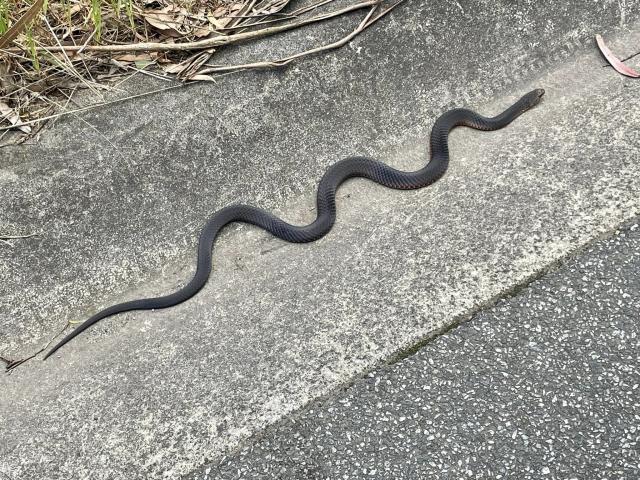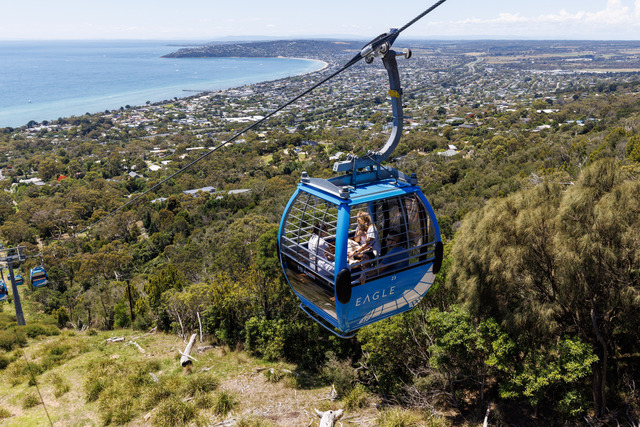Snakes have been getting up and personal with locals this spring; eliciting feelings of fright and curiosity after recent copperhead sightings.
Kristy Allan spotted a lowland copperhead just off the beaten track at Ferntree Gully Quarry on Thursday 9 November while walking back from meditation practice.
“I genuinely felt excited. I crouched down quite close to the snake to observe its behaviour,” Kristy said.
“I felt I was close enough without being a threat and it displayed no aggressive tendencies toward me at all.
“I took a couple of photos before the both of us retreated and went on our way.”
Kristy said she used the sighting to further educate her children on the dangers of having neurotoxic species of snakes in the area.
“I have lived in this area for almost 45 years and this is my first snake sighting in this area. I think generally they like to keep out of sight,” she said.
“However, in this warmer weather it pays to be mindful and not walk through long grassy areas and stick to the path.”
Jamie Dale spotted another lowland copperhead working its way down Hughes Street in Upwey at mid morning on Wednesday 8 November.
“It was clearly on a caffeine mission – it had that look about it,” Jamie said.
“They’re not uncommon around the hills, and these lowland copperheads like to be out in the warmer weather.”
Georgia Havekotte of Menzies Creek had a precarious visit from a lowland copperhead who came up to her window; facing a vacuum cleaner placed inside.
“There I was, peacefully working from home, when I look around and see this guy next to me,” Georgia wrote on social media in a post on 9 November that amassed over 400 reactions.
“I’ve been in the hills for seven years and I’ve never seen a snake, till now,” she said.
“With a dog and toddler at home, it makes me very nervous to say the least.”
Although venemous, Reptile Victoria’s Simon Watharow said the lowland copperhead is nicknamed the “labrador of snakes” due to its friendly nature.
“The reason for that he’s a gentle snake, even when they strike if something like a cat or a dog was attacking it, they only strike with their mouth closed as a rule,” Mr Watharow said.
“It takes a lot to make them bite, so that’s why when you have that species snake bite in domestic animals really low.”
Mr Watharow said the tiger snake – which is found along the Warburton River and Yarra River – is bound around water courses.
“There’s a tiger snake population all over the Yarra River; you get sporadic ones like someone got a tiger snake from Belgrave a few weeks ago, but mostly it’s copperhead country.
“It’s a lot colder, wet, and therefore snakes that can handle those conditions tend to be more common.”
Mr Watharow said the best advice for anyone who has a slithery visitor is to leave the reptile alone.
“They’re not going to live around your property; they’re not going to take out a lease and hang out for six months as a rule,” he said.
“If you’ve got a lot of overgrown long grass… maybe you’ve got mice, maybe you’ve got baby birds; you’ve got too much bird seed or chicken seed or some people have wildlife feeders where they’ve got a parrot mix on a feeding station.
“All that spilled food goes to the ground and the mice and rats come and get it; if you don’t keep control of that situation, that encourages snakes… so getting control of your yard is important; when you trim over the lawn mower, keep all the weeds down, don’t have a lot of clutter, don’t stash everything in the shed – that tends to reduce the impact for the snakes to come in, and where they can hang out.”
As a rule, Mr Watharow said someone dies from a snake bite between one to every three to eight years in Victoria.
“Whereas if you’re in Northern Australia; Queensland, north WA, they might have a bit more of a higher frequency; it might be one every year to two years for them,” he said.
“Someone has passed away from what I understand in north west Victoria already this year, but I don’t think that person even knew they got bitten by a snake.”








